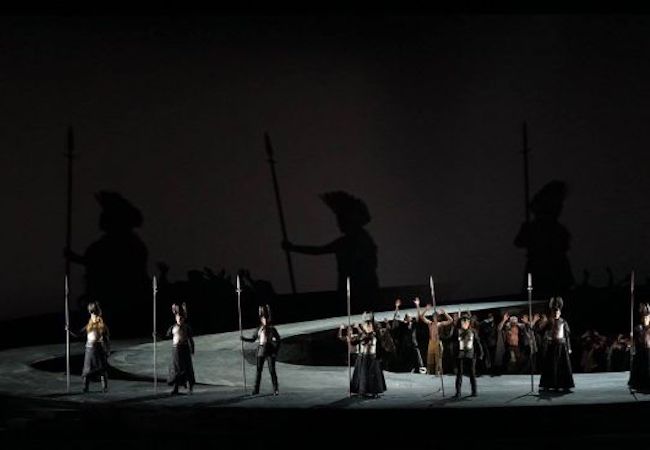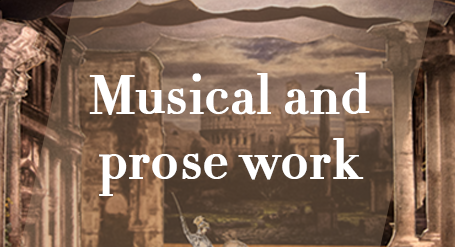
The musical work of Richard Wagner is composed of operas or “musical dramas” ranging from “Fairies” (Die Feen) to “Parsifal”. A detailed presentation of each of these major works is associated here with a set of thematic articles, placing them not only in the context of his personal life but also in his social, economic and cultural context. This section also includes all the musical works (excluding opera) and his literary work.
THE VALKYRIE, WWB86B
Die Walküre, WWB86B
In short
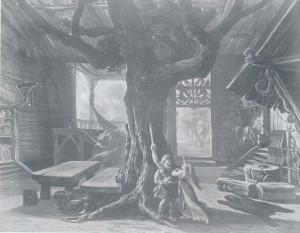 Die Walküre (The Valkyrie), WWV 86B is the second of the four music dramas that constitute Richard Wagner’s Der Ring des Nibelungen,(English: The Ring of the Nibelung). It was performed, as a single opera, at the National Theatre Munich on 26 June 1870, and received its first performance as part of the Ring cycle at the Bayreuth Festspielhaus on 14 August 1876.
Die Walküre (The Valkyrie), WWV 86B is the second of the four music dramas that constitute Richard Wagner’s Der Ring des Nibelungen,(English: The Ring of the Nibelung). It was performed, as a single opera, at the National Theatre Munich on 26 June 1870, and received its first performance as part of the Ring cycle at the Bayreuth Festspielhaus on 14 August 1876.
As the Ring cycle was conceived by Wagner in reverse order of performance, Die Walküre was the penultimate of the four texts to be written, although Wagner composed the music in the proper sequence. The text was completed by July 1852, and the music by March 1856. In his composition Wagner largely followed the principles related to the form of musical drama which he had set out in his 1851 essay Opera and Drama under which the music would interpret the text emotionally, reflecting the feelings and moods behind the work, by using a system of recurring leitmotifs to represent people, ideas and situations rather than the conventional operatic units of arias, ensembles, and choruses. Wagner showed greater flexibility in the application of these principles, particularly in Act 3 when the Valkyrie maidens engage in regular ensemble singing.
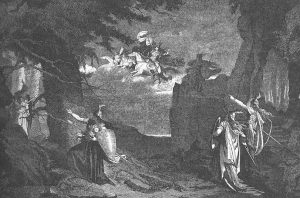 As with Das Rheingold, Wagner wished to defer any performance of the new work until it could be shown in the context of the completed cycle, but the 1870 Munich premiere was arranged at the insistance of his patron, King Ludwig II of Bavaria. More so than the other Ring dramas, Die Walküre has achieved some popularity as a stand-alone work, and continues to be performed independently from its role in the tetralogy.
As with Das Rheingold, Wagner wished to defer any performance of the new work until it could be shown in the context of the completed cycle, but the 1870 Munich premiere was arranged at the insistance of his patron, King Ludwig II of Bavaria. More so than the other Ring dramas, Die Walküre has achieved some popularity as a stand-alone work, and continues to be performed independently from its role in the tetralogy.
The story of Die Walküre is based on the Norse mythology told in the Volsunga Saga and the Poetic Edda. In this version the Volsung twins Sieglinde and Siegmund, separated in childhood, meet and fall in love. This union angers the gods who demand that Siegmund must die. Sieglinde and the couple’s unborn child are saved by the defiant actions of Wotan’s Valkyrie daughter Brünnhilde, who as a result faces the gods’ retribution.
Wagner began work on what became his Ring project in October 1848 when he prepared a prose outline for Siegfried’s Death, based on the legendary hero of Germanic myth. During the following months he developed the outline into a full “poem” or libretto.
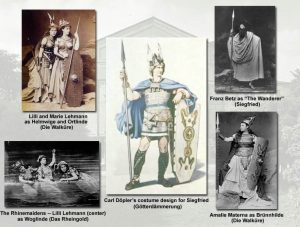 After his flight to Switzerland in May 1849, Wagner continued to expand his project, having decided that a single work would not suffice for his purposes. He would therefore create a series of music dramas, each telling a stage of the story, basing the narrative on a combination of myth and imagination; Siegfried’s Death would provide the culmination. In 1851 he outlined his purposes in his essay “A Communication to My Friends”: “I propose to produce my myth in three complete dramas, preceded by a lengthy Prelude (Vorspiel)”. Each of these dramas would, he said, constitute an independent whole, but would not be performed separately. “At a specially-appointed Festival, I propose, some future time, to produce those three Dramas with their Prelude, in the course of three days and a fore-evening”.
After his flight to Switzerland in May 1849, Wagner continued to expand his project, having decided that a single work would not suffice for his purposes. He would therefore create a series of music dramas, each telling a stage of the story, basing the narrative on a combination of myth and imagination; Siegfried’s Death would provide the culmination. In 1851 he outlined his purposes in his essay “A Communication to My Friends”: “I propose to produce my myth in three complete dramas, preceded by a lengthy Prelude (Vorspiel)”. Each of these dramas would, he said, constitute an independent whole, but would not be performed separately. “At a specially-appointed Festival, I propose, some future time, to produce those three Dramas with their Prelude, in the course of three days and a fore-evening”.
In accordance with this scheme Wagner preceded Siegfried’s Death (later Götterdämmerung (The Twilight of the Gods) with the story of Siegfried’s youth, Young Siegfried, later renamed Siegfried. This was in turn preceded by Die Walküre (The Valkyrie), dealing with Siegfried’s origins, the whole tetralogy being fronted by a prologue, Das Rheingold. Because Wagner prepared his texts in reverse chronological sequence, Die Walküre was the third of the dramas to be conceived and written, but appears second in the tetralogy.
![]()
For further information : THE RING OF THE NIBELUNG (Der Ring des Nibelungen) in short
If you wish to share further information about this article, please feel free to contact us !
